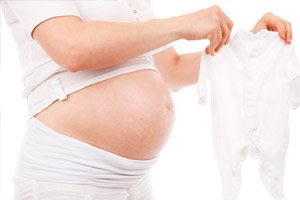
All iLive content is medically reviewed or fact checked to ensure as much factual accuracy as possible.
We have strict sourcing guidelines and only link to reputable media sites, academic research institutions and, whenever possible, medically peer reviewed studies. Note that the numbers in parentheses ([1], [2], etc.) are clickable links to these studies.
If you feel that any of our content is inaccurate, out-of-date, or otherwise questionable, please select it and press Ctrl + Enter.
Childbirth with dignity
Last reviewed: 02.07.2025
 ">
">A quarter of a century ago, a nationwide campaign by the Birth with Dignity Foundation was launched in Poland. Women began telling their birth stories, about the enormous stress they experienced, being left alone, without the support of loved ones, in a room that resembled a prison cell, without sufficient respect from the medical staff, deprived of the opportunity to be with their newborn child. Polish women began calling for respectful treatment of women during childbirth.
A common problem for all women in labor at that time was the complete lack of personal space, support from both loved ones and maternity hospital workers, as well as loneliness during this difficult period.
Most of the women had their perineum cut, which made them feel humiliated, and many did not receive pain relief during the unpleasant procedure.
Breastfeeding rates were low, and experts believe this was because mothers were deprived of the opportunity to be with their babies.
It is worth noting that all these conditions caused severe emotional trauma in women, so the Foundation made every effort to ensure that other women could feel more protected during childbirth.
The company's specialists achieved changes in the healthcare system that received international recognition. First of all, husbands were allowed to be present during the birth of a child and morally support their woman.
In addition, it became common practice for a child to stay with the mother around the clock; the newborn was left with the woman immediately after birth, and relatives were also allowed to visit.
This practice has led to the fact that for almost all women, the birth of a child has become a real joy, they no longer feel lonely, and childbirth is now considered a family event. According to experts, this approach ensures a calmer and easier stay for the mother and child at home, after discharge.
The World Health Organization also calls on all countries to respect women's rights, especially during childbirth, as in a number of countries women still suffer from disrespect and loneliness during childbirth.
Last year, WHO issued a statement urging health systems around the world to strengthen the rights of women in childbirth, and today more than 80 countries have adopted the call for action.
Several years ago, Polish specialists released the first “Standards of Medical Care in the Antenatal and Postnatal Periods”, which comply with WHO guidelines.
According to Polish standards, a woman has the right to choose where and how she will give birth, who will be with her during this time, and also has the right to be with the child for at least two hours after birth.
Today, WHO, together with the Birth with Dignity Foundation and the Polish Ministry of Health, monitor the quality of medical care and care for women in labor and newborns. In the near future, it is planned to introduce a methodology for assessing maternity wards, which will help to better control the adopted standards.
It is worth noting that after the improvement of medical care and care for women in labor and newborns, the health of both women and their children has become significantly better, in addition, the mortality rate among infants has significantly decreased.
 [ 1 ]
[ 1 ]
